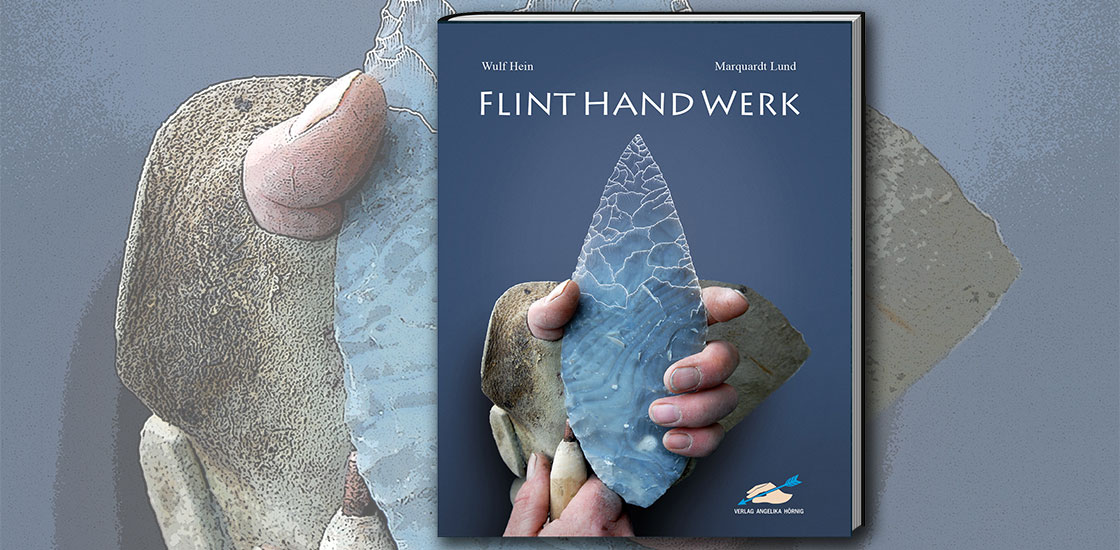
The book “Flinthandwerk” is a co-production of two known German experts in experimental archaeology. Both authors have been studying prehistoric techniques for years; Lund has spent his whole lifetime practicing flint-knapping skills during his free time, whilst Hein is the founder of a company that specializes in the reproduction of Stone Age artifacts for museums. Lund is the initiator of the European flint-knapping conference that takes place every year.
The book “Flinthandwerk” (flint- craft) opens with the theory behind this mysterious stone, how it was formed geologically and where it is sourced in Europe. The next chapter describes the mathematics behind flint-knapping and which materials are knappable and which are not. The authors give us an overview of flint uses in prehistoric times and the past centuries. They even demonstrate how to light a fire with flint and iron pyrite.
The practical part of the book begins with a selection of tools that are required for flint-knapping, like hammer-stones, punches and pressure flakers. The authors also give some very important advice aimed at beginners on how to protect against injuries.
There is some literature about flint-knapping available. However, most of the books that discuss these techniques come from knapping experts from the United States, where a growing number of knappers are practicing on different knappable materials. Their tradition in flint-knapping is completely different from the European tradition; the ‘last wild Indian’ in American known as Ishi, died one hundred years ago and also used glass for his tools. For this reason American knappers are less interested in reproducing archaeological artifacts than in producing perfectly shaped blades and arrowheads. And to obtain this goal, they even make use of modern power tools like grinders and diamond saws.
Hein and Lund wanted to give a Do It Yourself description for interested knappers, but they absolutely wanted to stay primitive in their tools (they do not even use the famous copper bopper) and they always try to do a perfect reproduction of original finds instead of inventing new shapes. In the book you can find a step-by-step description of how to knap axes, arrowheads, blades and even a type III B dagger.
A big part of “Flinthandwerk” presents different types of Stone Age tools that were found in Europe and their manufacturing process. Needless to say, the authors cannot explain the manufacture of every single object step-by-step, but they explain what kind of tools and techniques were required to produce the shown object. For an experienced knapper this will be ample information to be able to reproduce it. Naturally, the techniques are to be practiced for hours on end prior to producing a finalized reproduction; there is no magic behind flint-knapping, only a little bit of mathematics and lots of trial and error.
The book was written for both novices and experts in flint-knapping. It is a Do-It-Yourself description to success as well as a catalogue of Stone Age artifacts, full of beautiful photos and detailed drawings. For this reason this complex book is unique amongst the available literature and perfect for experimental archaeologists.
Book information:
HEIN, W. and LUND, M. (2017) Flinthandwerk. Publisher: Angelika Hörnig, Ludwigshafen. ISBN 978-3-938921-46-3. 372 pages. Available through https://www.bogenschiessen.de/webshop6/Books/Archery-History/FLINTHANDWERK::1009.html